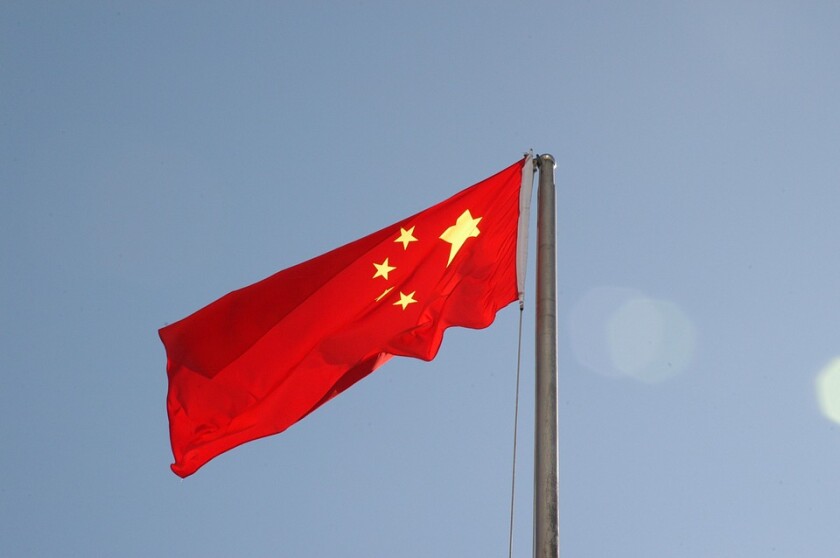Market overview
Statistics show that Chinese M&A activity in 2023 was generally lower than expected. Many reports suggested that Chinese M&A was down by two digits in value and volume, but a rebound was observed in the second half of 2023.
Stumbling capital markets and geopolitical complexity seemed to have an impact on the crawling recovery of M&A activities in 2023, reflecting domestic economic conditions and global economic trends.
Overall, the Chinese M&A market in 2023 was characterised by strategic consolidations, significant outbound investments, and a focus on certain key growth sectors such as electric vehicle-related industries. The market dynamics reflected fewer opportunities and cautious optimism among investors.
Domestic M&A activities were predominantly driven by sectors such as technology, media, and telecommunications; advanced manufacturing; and new energy and mobility industries. The Chinese government’s policy on promoting self-reliance and new energy in key industries led to increased M&A activity in those areas. State-owned companies appear to continue to be a major player in M&A activities in domestic and outbound markets.
Notably, according to an EY report, the amount of China’s outbound M&A increased by 20.3% year on year. Statistics also show that while the total deal number was down, large transactions over $500 million surged. In particular, M&A deals by Chinese companies in the Belt and Road Initiative countries were up by 32.4% in 2023, outpacing the overall growth rate.
The following were among the largest deals of the year:
China National Petroleum Corporation’s (CNPC’s) acquisition of a stake in Qatar Energy's North Field East expansion – this deal, valued at $10 billion, saw CNPC acquiring a stake in one of the world's largest natural gas projects;
Sinochem Holdings' merger with ChemChina – this merger created a behemoth in the chemical industry, with the combined entity being one of the world's largest chemical producers;
Baidu’s acquisition of JOYY’s live streaming business – valued at $3.6 billion, this acquisition allowed Baidu to strengthen its position in the live streaming sector and diversify its revenue streams;
Saudi Aramco expanded its presence in China by acquiring a 10% equity interest in Rongsheng Petrochemical for $3.4 billion; and
US-based Jabil Inc. sold its mobile electronics manufacturing business in China to BYD Electronics for $2.2 billion, underscoring significant cross-border industrial consolidation.
These transactions highlight the dynamic nature of the Chinese M&A landscape in 2023, driven by strategic expansions, industrial consolidation, and significant foreign investments, especially in sectors such as energy, technology, and automotive.
Legislation and policy changes
As in many other jurisdictions, the rules applicable to M&A in China are generally understood to be reflected in a series of laws and regulations, including the Company Law, the Anti-monopoly Law, and the Civil Code. For inbound M&A deals, in addition to the Regulations on the Merger and Acquisition of Domestic Enterprises by Foreign Investors, which are the most important regulations, several other intricate regulations governing market entry, industry-specific restrictions, land use restrictions, foreign exchange, and national security would also be applicable.
While the major rules for M&A remain unchanged, including the Regulations on the Merger and Acquisition of Domestic Enterprises by Foreign Investors (which became effective in 2006 and were slightly amended in 2009) and a set of regulations issued by the National Development and Reform Commission and the People’s Republic of China’s Ministry of Commerce for outbound investments, there are several notable legislative developments that may affect M&A activities and related practices in China, as discussed below.
In late 2023, the China Securities Regulatory Commission (CSRC), the Shenzhen Stock Exchange, and the Shanghai Stock Exchange issued new rules, which, among others, impose additional restrictions on the issuance of new shares and the offering of convertible debts, and the use of proceeds therefrom. In August 2023, the CSRC issued new rules restricting large shareholders and directors and officers of public companies from selling their shares. Such restrictions obviously constrain the ability of public companies’ large shareholders and management from obtaining the financing or liquidity needed for large-scale M&A deals.
The new Company Law of the People’s Republic of China, which was amended in 2023 and became effective on July 1, 2024, introduces several key changes that may affect M&A in China. The new Company Law clarifies that in an equity deal, the buyer and seller may be jointly liable for due but uncontributed registered capital or overly valued contributions in kind associated with the equity being transferred, unless the buyer can prove it does not know, or should not have known, about such circumstances. One of the major impacts is that buyers should conduct due diligence and exercise extra caution if capital associated with the transferring equity was contributed in kind.
In addition, directors and officers are subject to a greater fiduciary duty and could be exposed to higher risks of liability to the company they serve. Therefore, parties to a transaction likely would need to find an appropriate way to address potential pre-closing liabilities of the directors and officers who were nominated by sellers and would be replaced upon closing.
The new Company Law introduces a squeeze-out right and sell-out right in mergers, so shareholder approval for a company merger can be secured if the merger is consented to by shareholders holding at least 90% of the total shares or equity interests in the aggregate. As a remedy, the minority shareholders have the right to sell their shares or equity interests at a reasonable price. Although it is yet to be seen how ‘reasonable price’ should be determined, it certainly provides a path for M&A that otherwise could have been blocked by dissenting minority shareholders.
In addition to the new laws and regulations discussed above, there are other legislative initiatives in the pipeline that could have a major impact on M&A activity in China. Most significantly, the regulations regarding the merger filing thresholds, which were first released in 2008, were expected to be significantly increased in early 2024, and, accordingly, many Chinese M&A transactions or global transactions involving Chinese-generated turnover may no longer be subject to China antitrust clearance.
The creation of the National Data Bureau marks a significant shift in China’s regulatory regime concerning data. The bureau, along with other governmental authorities, has launched a three-year action plan that aims to enhance the integration and utilisation of data resources across various industries. This plan includes stringent oversight and may affect how data-related M&A transactions are regulated.
Market norms
With respect to price mechanisms, purely domestic deals tend to use the locked-box mechanism, but cross-border M&A deals more commonly use the completion accounts mechanism. However, due to foreign exchange restrictions, using the completion accounts mechanism poses additional issues to be solved and adds more deal complexities.
If a party to an M&A transaction is a state-owned enterprise, special rules in respect of the supervision and administration of state-owned assets would apply. For example, the pricing of the transferring equity or assets should be subject to an asset appraisal result from a qualified appraiser. Furthermore, a sale of state-owned equity or substantial assets needs to be conducted through a bidding process at an equity and asset exchange, and therefore, at least theoretically, could have to compete with other potential interested buyers to win the bid. Before the bidding process is closed, the state-owned enterprise technically is not allowed to enter into any binding agreement with any interested buyer. All those requirements increase the complexity of a transaction. Counsel to buyers need the expertise to navigate their clients through those complex requirements and ensure deal certainty.
Escrow arrangements are becoming more common in cross-border transactions; under which, purchase prices would typically be deposited in escrow accounts before the filing of the equity transfer is initiated or completed. This is important to sellers because, due to the applicable foreign exchange restrictions, the seller in a cross-border transaction does not actually receive the purchase prices until after the equity transfer is successfully filed with the relevant authorities. An escrow arrangement can usually minimise (but not eliminate) the risk that the seller ends up not being paid for the equity transfer. But in purely domestic M&A, escrow arrangements are typically not considered necessary, because there are adequate mechanisms to ensure that the payment of the purchase price and the transfer of equity occur simultaneously upon closing.
Representation and warranty insurance is used mostly for sizeable cross-border M&A transactions, despite its potential benefits, partly because of its extra cost.
There is not a widely accepted market norm with respect to indemnity caps and exclusions. Therefore, those terms are often heavily negotiated.
Major closing conditions are not much different from what you would typically expect for transactions in other jurisdictions, but parties could add other conditions to address concerns arising out of due diligence findings and the particulars of a transaction.
A successful merger or acquisition certainly does not just end upon closing; instead, it is just the beginning of the journey, and post-merger integration is an even more critical phase. In designing post-closing clauses to ensure successful integration, buyers would typically include sellers’ non-compete and non-solicitation obligations to maintain a stable operation of the target company. Such obligations in a business sale context are usually upheld in courts, even though no additional compensation is made to sellers for taking on those obligations.
If the success of the acquired business is heavily dependent on the seller’s continued support or the retention of management personnel post closing, it is also possible to have separate earnout or retention bonus plans as part of the transaction. In addition, in a purely domestic M&A transaction, especially where the buyer is a publicly traded company in China, to ensure that the financial performance of the acquired business meets the buyer’s business projection, a valuation adjustment mechanism is commonly used so that the seller would be required to compensate the buyer if the post-closing financials fail to meet the targets.
In contrast, it is not uncommon that sellers also impose a post-closing obligation on buyers, so buyers should retain employees and maintain employees’ employment terms, including benefits, for a certain period.
It is important to note that the market practices discussed above mostly apply to private M&A activity.
Public M&A
Takeovers of public companies almost kept the same pace in 2023. According to the 2023 A-Share Merger Report issued by the 21 Century Research Institute, a total of 121 takeover deals of public companies closed in 2023, a slight decrease from 2022. Among those deals, only 41 public company takeover deals were made through typical share purchase M&A transactions between the former controlling shareholders and the acquirors, while other deals were completed through reorganisation proceedings, court-administrated sales, or other transactions.
Generally, in public company share purchase deals, former controlling shareholders and the acquirors would enter into a share purchase agreement whereby the controlling shareholders agree to sell all or most of their shares of a public company to the acquiror. This option is available only if the shares to be sold are not subject to a lock-up period, pledges, or other transfer restrictions, such as asset preservation orders issued by courts. The purchase price can typically be negotiated and agreed upon in light of the average share trading price for a period of trade days prior to closing, and the trading of shares would typically be suspended after the deal is announced.
Sometimes, acquisitions of public companies are completed in conjunction with a voting arrangement that allows the acquiror to control the target public company. This approach is often used when some shares that are intended to be transferred are subject to transfer restrictions at the time, but the acquiror would like to gain control of the target even before the share transfer restrictions are lifted, or the seller that would like to retain some shares of the target is agreeable to handing over the voting rights and control over the target to the acquiror before the whole transaction is completed. Such voting arrangements would be scrutinised by the regulatory authorities.
There are other options for public company takeovers, including the issuance of new shares or tender offers, but they are not commonly used in practice.
There have not been any hostile takeovers in recent years, partly because the largest shareholder of a Chinese public company often holds a fairly large percentage of the total issued shares and any hostile takeover attempts would likely be unsuccessful or very costly.
Private M&A
Locked-box and completion accounts are major mechanisms commonly used to determine purchase prices in private M&A transactions. In some cases, an earnout is used in addition to a locked-box or completion accounts mechanism, especially if the seller is a founder and is retained to facilitate business transition post closing. If the seller would keep a minority stake in the acquired target after closing, then depending on whether it is a strategic investor or a private equity buyer, put and call options, as well as drag-along and tag-along rights, would sometimes be included in the post-closing shareholders agreements.
If the equity or assets being transferred are state owned, then the pricing mechanism could be very different. For example, the purchase price technically should be based on an asset appraisal result of the transferring state-owned equity or assets. The pricing of the transferring shares or assets must be not less than 90% of the appraised value, unless a special approval is obtained from the state assets management entity or authority. Additionally, sellers would often ask to retain the profit earned for the period from the appraisal cut-off date to the closing date.
Looking ahead
As a continuity of the trend from the second half of 2023, the forecast for China's M&A activity in 2024 indicates a potential modest rebound in amount and volume after several years of decline. This expected recovery is driven by a combination of projected steady economic growth, favourable policy changes, and a renewed interest from domestic and international investors. Several factors are contributing to this cautiously optimistic outlook:
Economic recovery and policy support – China's economy is projected to stabilise in 2024, which is likely to support M&A activity. Additionally, the government is expected to implement policies to stimulate private sectors and reduce regulatory barriers for foreign investments, particularly in manufacturing sectors.
Sector-specific opportunities – key sectors expected to see increased M&A activities include technology, media, and telecommunications, and advanced manufacturing. Notably, there is significant interest in new energy sectors.
Regulatory environment – despite the tightening regulatory landscape in China and the US, including export controls and investment restrictions, there are areas where regulations might become more lenient.
Valuation adjustments and investor confidence – depressed valuation levels and a backlog of deal opportunities due to the economic downturn in recent years may create a favourable environment for buyers. This could lead to an uptick in deal activity as sellers adjust their expectations to current market conditions.
Geopolitical considerations – while geopolitical tensions, especially between China and the US, continue to pose challenges, they also create opportunities for strategic realignments and investments in less sensitive sectors or other geographic regions.
Overall, while uncertainties remain, particularly around geopolitical tensions and the regulatory changes discussed earlier, the outlook for China's M&A market in 2024 is cautiously optimistic, with the potential for a significant rebound as economic and policy conditions improve.





